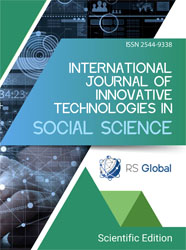GRAPHIC DESIGN OF CONTEMPORARY ART MAGAZINES
(On an Example of “Teatri”, “Arili”, “ARTFORUM”, “Art in America)
Abstract
Cohen's assertion that “the press may not be successful most of the time in telling people what to think, but it is stunningly successful in telling them what to think about” encapsulates the media's profound agenda-setting power in shaping public discourse, a critical component of democratic societies. While the contemporary media landscape is dominated by social and digital platforms, the enduring influence of print media, particularly in developed nations, cannot be understated. Publications such as The Times, The New York Times, The Guardian, The Daily Telegraph, Forbes, The New Yorker, and Cosmopolitan exemplify this sustained impact. Their influence extends beyond mere content dissemination, encompassing sophisticated visual strategies, including cover design and graphic layout, which contribute significantly to their authoritative positioning and the cultivation of informed public discourse. These publications, therefore, serve as critical sites for the analysis of how print media continues to navigate and shape public opinion within a rapidly evolving media ecosystem.
In this article, we will discuss the graphic design of two Georgian and two American art magazines - "Teatri", "Arili", "ARTFORUM" and "Art in America".
References
Aranke, S. (2021). Theories of Performance. Art Institute of Chicago.
Avaliani, N. (2023). Magazine Graphic Design, Tbilisi.
Evans, H. (1981). Newspaper Design, London: Press Association Publishing.
Greenberg, A. (2023). Sculptor Alix Vernet Excavates Secretes from Architectural Facades, magazine ARTFORUM, N 9, pp.75-82.
Irwin, J. P. (1962). Magazine ARTFORUM, New York.
Morelos, D. (2022). Art of Expression, Columbian University Press.
Views:
103
Downloads:
45
Copyright (c) 2025 Asmat Tsereteli, Eka Tkhilava

This work is licensed under a Creative Commons Attribution 4.0 International License.
All articles are published in open-access and licensed under a Creative Commons Attribution 4.0 International License (CC BY 4.0). Hence, authors retain copyright to the content of the articles.
CC BY 4.0 License allows content to be copied, adapted, displayed, distributed, re-published or otherwise re-used for any purpose including for adaptation and commercial use provided the content is attributed.











